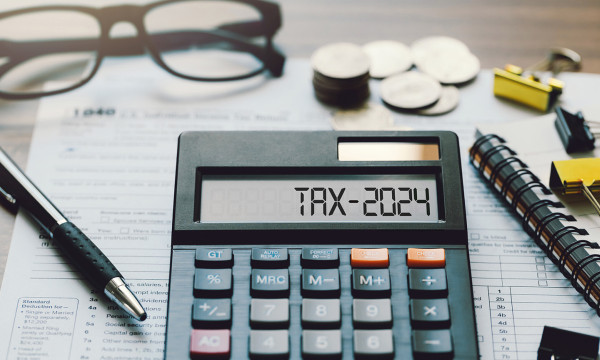Smart ways to use your child tax credit

If you have children, you may be among the millions of American parents who will be getting checks or deposits from the IRS starting in July (more info from the IRS here). We’ve put together some helpful information about the child tax credit, as well as some tips for using these dollars to set your family up for future success.
What’s different this year?
The Internal Revenue Service has mailed out notices to an estimated 38 million parents, letting them know they are due for payment on or after July 15. This differs from previous years, when filers took the credit at tax time as one lump sum. Let’s start with a quick look at what changed and why.
The American Rescue Plan, which increased the existing child tax credit, passed earlier this year. This means the maximum credit could be as much as $3,600 for children under 6 and $3,000 per kiddo for children between 6 and 17. This legislation includes a portion of those funds to be prepaid over the final six months of 2021 (mid-July to mid-December). These payments will come to qualifying parents automatically via the IRS through direct deposit, paper check, or debit cards (again, we invite you to read more at IRS.gov).
These six payments comprise half of the proposed benefit for the year. CNET offers a great calculator for figuring your payment (or lump sum), but here are some rough guides (please don’t hold us to this, as we are not familiar with your financial or familial situation): Most parents of a single child between 6 and 17 would see a $250 monthly check. Fully qualified parents of a child under 6 would be eligible for $300 each month. The remaining portion will be credited at tax filing time, just like in the past. And the payments are fully refundable, meaning even parents who do not owe taxes may be eligible.
Smart tax credit spending strategies
Getting an extra windfall — especially after such a fraught year — may have you itching to plan a family vacation or make a large purchase you’ve had your eye on. But before you make any decisions, let’s hit pause and think through some smart strategies for using these dollars.
Are your basics covered?
This is an excellent time to take a look at your monthly budget and assess how well you’re meeting your needs and wants. Do you consistently fall short in one or more areas? Then your “needs” areas could probably use the extra cash before any other category gets bolstered. Diapers and formula are so expensive, and if your kiddos are older, their care and feeding doesn’t come cheap either. It’d also be wise to look at some of those expenses that are increasing (property taxes, gas, etc.) and adjust those categories accordingly. Once you have reviewed household supplies, food, utilities, and related necessary expenses, you can move on to the next category.
Are your larger expenses covered?
There are plenty of larger expenses that you deal with once or twice a year that can really leave a mark on your budget if you’ve forgotten about them. We’re talking holiday expenses, insurance, family entertainment, even school supplies. With some proactive budgeting, these expenditures won’t hurt quite so much, and now, while you have a little extra green, is the perfect time to do it.
Are you prepared for an emergency?
When folks talk about emergency savings, there are really two types: short-term and long-term. Your short-term emergency fund (which is a great place to start saving) should contain $500–$1,000. A great guideline is an amount that’s equal to your highest insurance deductible. It can be used for orthodontia, a broken bone (yikes!), etc.
As a general rule of thumb, long-term emergency savings should ideally equal three to six months of living expenses. This would cover your family for a few months in the case of a temporary layoff, unemployment, or a large-scale event that affects the economy for an extended period of time, as the pandemic did.
Are you retirement-ready?
We’re not asking if you’d like to retire now, but rather whether you’re preparing for it. It may be hard to imagine now, but your little darlings will be out of the house one day, and then all grown up. You don’t want to wait until then to plan for your golden years. While you’re reviewing your budget, check what you are contributing to your employer’s retirement plan. If they offer a match, you’ll want to make certain you are taking advantage of the full amount, so this is a great time to increase your contribution. If you haven’t started contributing yet, it looks like you’ve found a great use for your extra funds, and if your employer does not offer such a program, a conversation with your banker or a financial advisor can get you started prepping for retirement on your own.
How’s the rest of the future look?
No, we don’t expect you to break out the crystal ball. But are there expenses on the horizon that will need your attention? Wheels for your teen, or college tuition for kids of any age? Extra funds are the perfect opportunity to pad the 529, or whatever college savings vehicle you are using. Another option is to pay down your mortgage. And while we didn’t say this at the outset of this article, paying off any high-interest revolving debt should be addressed right after taking care of wants (ahhh, sweet freedom!).
We’ve given you some ideas for your extra cash, now all that’s left is to take pencil to paper (figuratively speaking — there are some great apps for that, like our own UBTgo app) to see where applying your funds makes the most sense.
Learning Center articles, guides, blogs, podcasts, and videos are for informational purposes only and are not an advertisement for a product or service. The accuracy and completeness is not guaranteed and does not constitute legal or tax advice. Please consult with your own tax, legal, and financial advisors.




